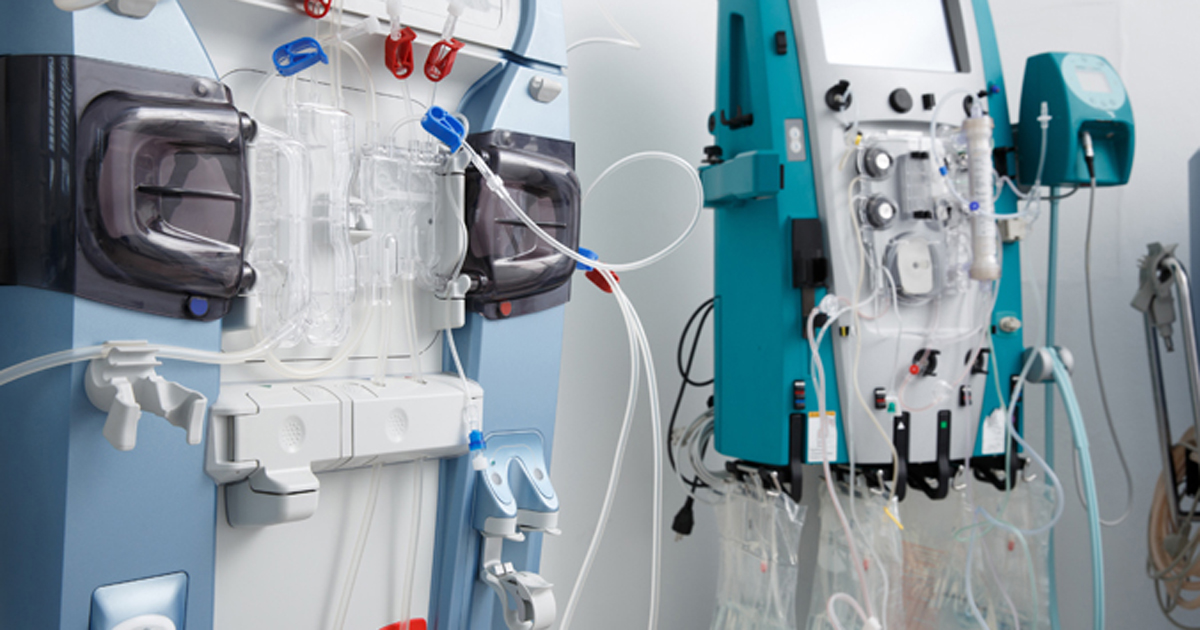Hypokalemia both before, after dialysis increases mortality risk
Having both pre- and post-dialysis hypokalemia increased the risk for mortality, according to data from Japan published in the Clinical Journal of the American Society of Nephrology.
However, post-dialysis hypokalemia only was not associated with increased mortality risk.
“Serum potassium levels drop significantly after hemodialysis, and 45% of patients present with post-dialysis hypokalemia of [less than] 3.5 mEq/L,” Tsuyoshi Ohnishi, MD, of the department of healthcare epidemiology at the School of Public Health at Kyoto University, Graduate School of Medicine, in Japan, and colleagues wrote. “The risk of low potassium dialysate has been reported in several studies and dialysis potassium ought to affect post-dialysis serum potassium. Thus, post-dialysis hypokalemia may be associated with a higher mortality risk. [However,] compared with pre-dialysis K, post-dialysis K is rarely investigated, and so its acceptable range remains unknown.”
To examine the relationship between post-dialysis potassium levels and all-cause mortality, researchers conducted a cohort study of 3,967 patients on maintenance hemodialysis (mean age, 65 years; 64% men; 96% treated with a dialysate potassium level of 2 to < 2.5 mEq/L), using data from the Dialysis Outcomes and Practice Patterns Study in Japan.
Serum potassium levels were measured before and after one dialysis session at 4-month intervals.
According to baseline post-dialysis potassium levels, researchers divided patients into a low group of less than 3 mEq/L, a medium-low group of 3 to less than 3.5 mEq/L, a medium-high group of 3.5 to less than 4 mEq/L and a high group of 4 mEq/L or greater.
During a median follow up of 2.6 years, 14% of patients died with an overall mortality rate of 6.7 per 100 person-years.
Results showed that, compared with post-dialysis potassium of 3 to less than 3.5 mEq/L, the hazard ratios of post-dialysis hypokalemia (defined as < 3 mEq/L) were 1.84 (95% CI, 1.44-2.34) in the unadjusted model, 1.44 (95% CI, 1.14-1.82) in the model that did not adjust for pre-dialysis serum potassium and 1.1 (95% CI, 0.84-1.44) in the model that did adjust for pre-dialysis serum potassium.

Investigators determined that post-dialysis hypokalemia only was not associated with mortality. However, the combination of pre- and post-dialysis hypokalemia was associated with the highest mortality risk (HR = 1.72; 95% CI, 1.35-2.19), followed by pre-dialysis hypokalemia only.
“One strength of this study was that we could exclude the direct effect of dialysate potassium on mortality,” the researchers wrote. “Dialysate potassium noticeably affects post-dialysis K, and its concentration may affect mortality. We observed no association between dialysate potassium and post-dialysis K because dialysate potassium is not commonly adjusted in Japan and was 2.0 mEq/L in most participants. Thus, we could evaluate the association between post-dialysis hypokalemia and mortality regardless of dialysate potassium. ... Further, the generalizability of the findings was another strength as the sampling approach of J-DOPPS makes it representative of most Japanese dialysis settings.”
The investigators concluded, “Post-dialysis hypokalemia was associated with mortality, but the association was not independent of pre-dialysis K.” – by Melissa J. Webb
Disclosures: Ohnishi reports no relevant financial disclosures. Please see the study for all other authors’ relevant financial disclosures.
